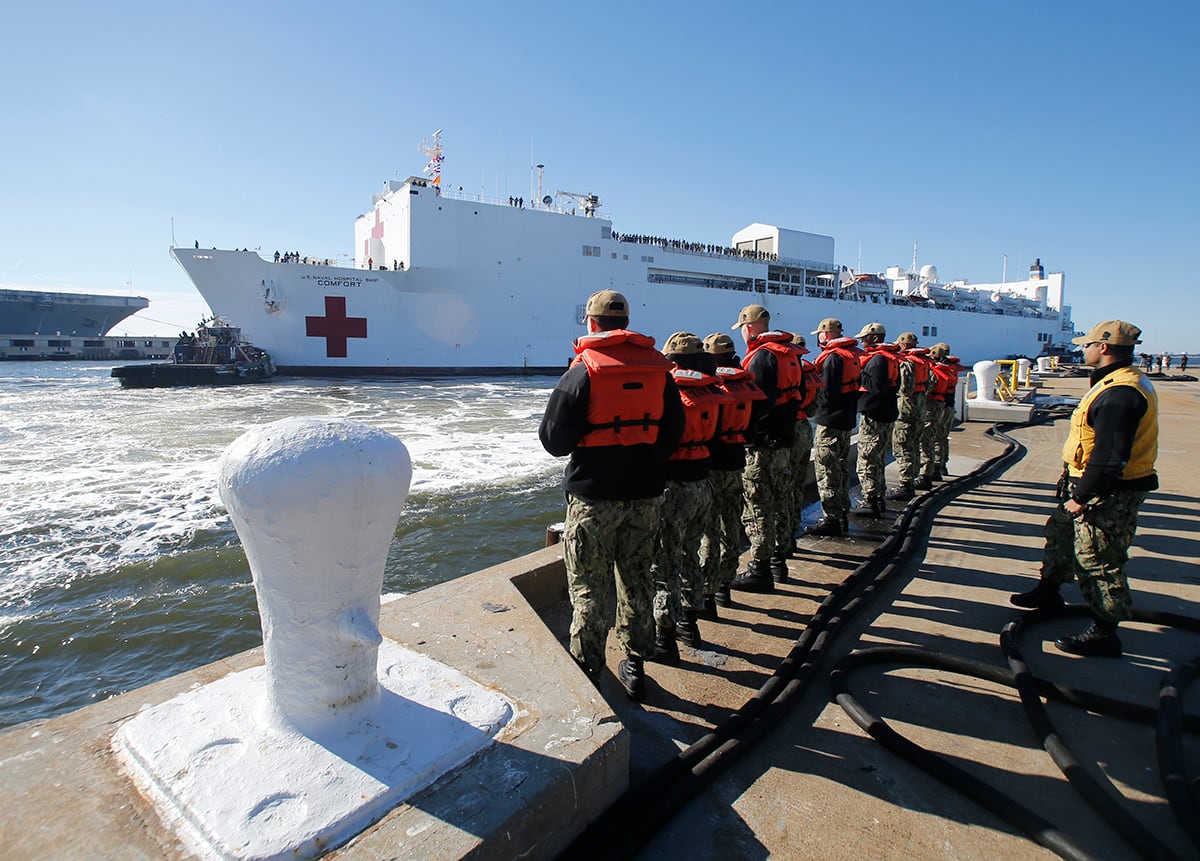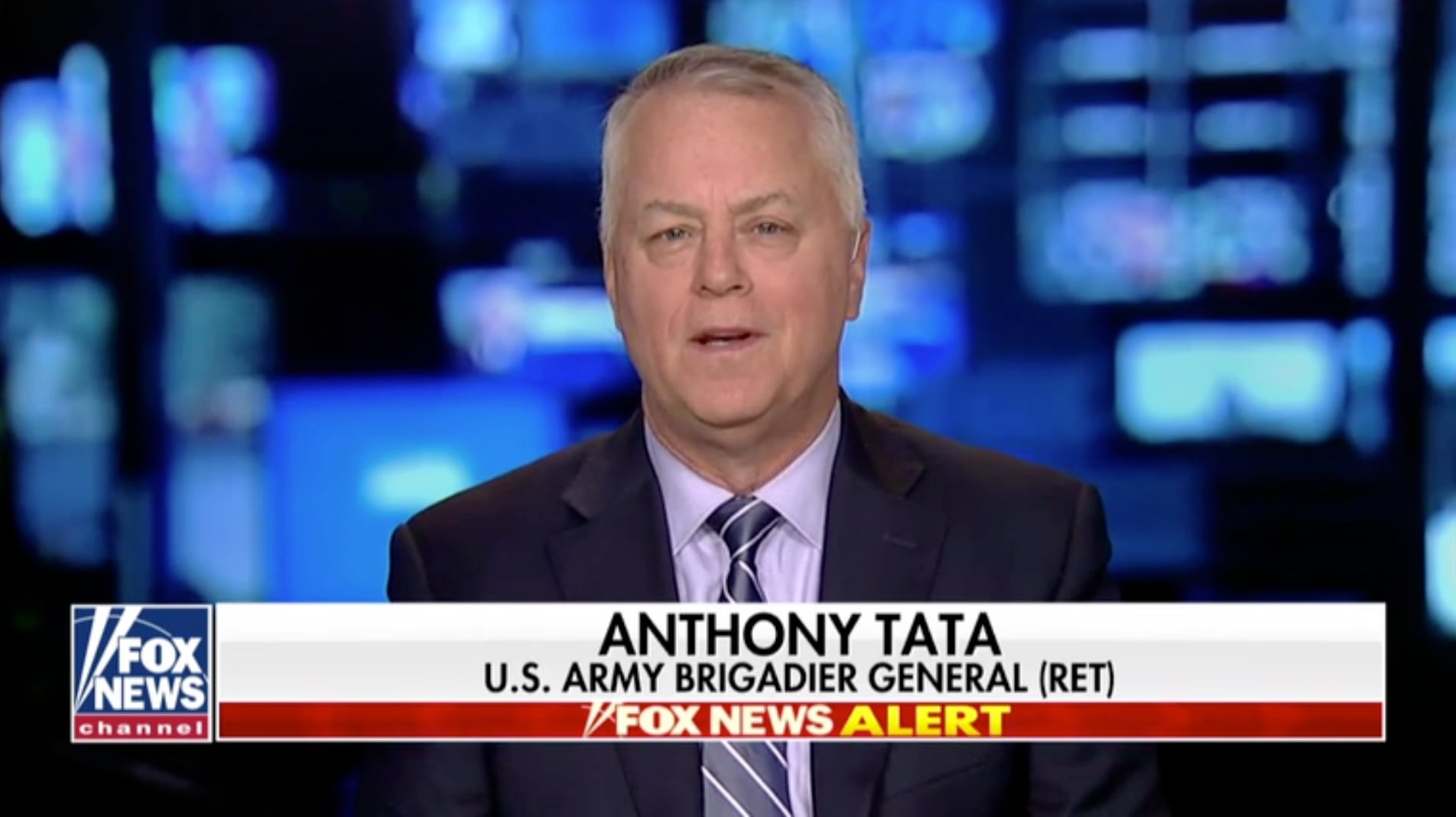In 1949, the Geneva Convention for the Amelioration of the Condition of the Wounded, Sick, and Shipwrecked Members of the Armed Forces set out to prevent hospital ships from becoming the targets of violence or retaliation in international conflict.
In turn, the ships themselves — in order to hold protected status as noncombatants — must be clearly distinguishable from other naval ships. As such, they are painted white and marked with the symbolic red cross, and the home country’s flag must also prominently wave. In addition, the Geneva Convention specifies that hospital ships must not participate in combat activities of any kind.
“USN/USNS hospital ships have never been armed,” a Naval Heritage and History Command spokesperson told Military Times. “To do so would remove their protections under the Geneva Conventions. The Master-at-Arms and his force aboard hospital ships may have been armed for the typical ‘good order and discipline’ issues (at least during World War II and the Korean War), but that would have been all.”
But today, three scholars with expertise in military medicine have suggested that in the world of hybrid warfare, the rules that govern such ships may put them at risk.
Their paper, “Arming Hospital Ships of the Future: Hybrid Wars Require a Major Change,” was recently published in the journal Military Medicine.
NATO defines hybrid warfare as “an interplay or fusion of conventional as well as unconventional instruments of power and tools of subversion.” For example, the use of disinformation to sow confusion prior to an invasion, or employing proxy forces to attack an adversary.
RELATED

In essence, it’s the lack of adherence to historically held principles of combat engagement — such as not targeting medical facilities or attacking civilians — that concern the authors of this particular paper.
“In today’s conflicted global environment, the clear identification of hospital ships leaving them relatively undefended and denying encrypted communication is the folly of a bygone era,” wrote researchers Michael S. Baker, Jacob B. Baker and Frederick M. Burkle. “Hospital ships may be targeted because they are brightly lit soft targets that can deliver a large payoff by their destruction.”
However, the aim of the paper is not to suggest offensive weaponry be added to hospital ships of the future, but rather defensive measures.
“The increasing threats from hybrid warfare and unprincipled adversaries to medical platforms and providers of health care demonstrate that hospital ships must be capable of self-defense,” the paper reads.
According to James Holmes, a professor at the Naval War College, the idea is sure to cause controversy, but the point is worth considering at the very least.
“Hospital ships are supposed to be exempt from hostile action under the laws of war, but they are clearly marked, they are completely unarmed, and thus they make easy and high-profile pickings for hybrid warriors,” Holmes said. “When they advocate arming hospital ships, they’re not talking about putting Harpoon or Tomahawk anti-ship missiles on them. That would give them offensive capability, making them into true fighting ships and negating any international legal protections to which they’re entitled.”
He cited the self-defense capabilities of the close-in weapons system, or CIWS, deployed recently by Navy destroyers to defend against Houthi missile attacks in the Red Sea as well as the rolling airframe missiles on aircraft carriers as potential solutions to the hybrid warfare threat.
“The coauthors point to the Russo-Ukraine war to make the case that civilian infrastructure often comes under fire in this mode of warfare,” Holmes added.
But not everyone agrees arming hospital ships, even defensively, is the way to go.
Bradley Martin, a senior policy researcher with RAND and a retired Navy surface warfare officer, noted that despite hospitals not being spared from attack in current conflicts, there are alternate paths hospital ships can take.
“I don’t think that arming hospital ships is a particularly sound idea,” he told Military Times.
Martin said he understands the impetus for the paper, but leans more towards the use of security detachments to protect hospital ships, as has been seen with humanitarian assistance and disaster relief deployments.
“As a matter of practice, hospital ships have in fact taken security detachments on [humanitarian assistance and disaster relief] missions for defense against small boats (and possibly drones, although the weapons are crew served weapons for short-range defense),” he said in an email. “However, arming them for anything more extensive is probably impractical.”
The Navy currently has two active-duty hospital ships, the USNS Comfort and the USNS Mercy. A contract for three new medical vessels in the expeditionary medical ship class are slated to begin construction in 2025.
As this new generation of hospital ships enter production, the paper’s authors are urging the service to reconsider how best to protect them and their crews.
“The U.S. Navy is designing new platforms for medical missions and the debate, no matter how uncomfortable, must now occur among major decision-makers to make them more tactical and defensible,” the paper notes.
Sarah Sicard is a Senior Editor with Military Times. She previously served as the Digitial Editor of Military Times and the Army Times Editor. Other work can be found at National Defense Magazine, Task & Purpose, and Defense News.





